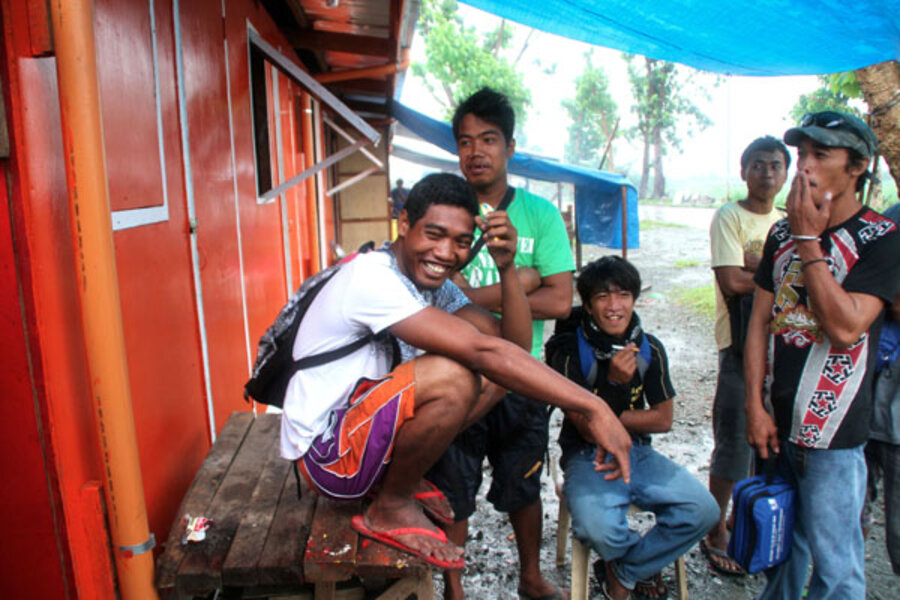In typhoon-slammed Philippines, controversy over unsanitary housing
Loading...
| Palo Leyte, Philippines
Mario Ginas, sheltering under a poncho from the driving rain, peered into the cramped, dark room where the government wants him to live after his home was destroyed two months ago by Typhoon Haiyan.
“This is more like a warehouse than a home,” he said, pointing to the water dripping from the roof and staining the plywood floor. “I can’t move my family in here until they have fixed the leak.”
Mr. Ginas, a mechanic, is at the center of a controversy over “bunkhouses,” barracks-like structures designed to provide temporary housing for 25,000 of the worst hit victims of November’s destructive storm. International aid agencies working with the United Nations say the bunkhouses do not meet minimum standards to ensure “a certain degree of privacy, security and dignity."
The typhoon displaced over 4.1 million people. Most are now patching up or rebuilding their houses, or living in evacuation centers, tent cities, or with relatives. The government built the bunkhouses as interim accommodation for families whose former homes were close to the sea, where they are no longer allowed to live because of the risk of storm surges.
Bowing to international pressure, the authorities have agreed to double the size of the rooms that families are assigned in future bunkhouses, from 90 square feet to 180 square feet. Hastily built by government contractors, they offer few comforts to typhoon victims who have been told they may be living there for as long as two years, until permanent housing is ready for them.
At a site just south of Tacloban City, 17 bunkhouses skirt an expanse of waterlogged wasteland. About 50 families have already moved in to two of them. Each family lives in a single small plywood box-like room, 8 feet by 12 feet. They have no electricity, nor any source of drinking water, though the walkways outside their doors are flooded ankle deep with rainwater.
Residents complain that they have received no food aid since they began arriving a week ago. There are only eight toilets for 250 people, and the cooking area – a waist high shelf of packed earth – is so cramped that some women have built makeshift fireplaces on the ground outside their front doors.
The buildings are brightly painted, but they have been built too close together, increasing the risk of fire in dry weather, international aid workers say. Made of plywood, their corrugated iron roofs lack any insulation to protect the residents from the heat.
Nor have the Philippines authorities used accepted practice for choosing who will be moved into the bunkhouses. Residents say they won a lottery, with no consideration given to how needy or vulnerable they were.
Ginas says he will be glad to move in once his leak is fixed because since the typhoon he has been living with his wife and two children in a relative’s shack near the shore, and “the sea is roaring again” as a storm brews.
But he is angry that the local authorities, who put in a power generator and a water bladder when President Benigno Aquino visited the site three weeks ago, took them away again as soon as the president had left.
The bunkhouses have sparked a political storm in the Philippines, amid opposition claims that local politicians in the worst-hit coastal areas colluded with private contractors to overcharge the government for the buildings. The head of the police Criminal Investigation and Detection Group, Benjamin Magalong, said last week the allegations “have basis” and would be investigated.
Reynaldo Abregana, meanwhile, is philosophical. A carpenter, he moved into a bunkhouse room here last week with his wife and two small children. He finds the space cramped, but says, “it is better than a tarpaulin, which is all the shelter I have had for the last few weeks. Anyway, we don’t have any choice.”








